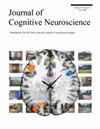Event Segmentation Promotes the Reorganization of Emotional Memory
IF 3.1
3区 医学
Q2 NEUROSCIENCES
引用次数: 0
Abstract
Event boundaries help structure the content of episodic memories by segmenting continuous experiences into discrete events. Event boundaries may also serve to preserve meaningful information within an event, thereby actively separating important memories from interfering representations imposed by past and future events. Here, we tested the hypothesis that event boundaries organize emotional memory based on changing dynamics as events unfold. We developed a novel threat-reversal learning task whereby participants encoded trial-unique exemplars from two semantic categories across three phases: preconditioning, fear acquisition, and reversal. Shock contingencies were established for one category during acquisition (CS+) and then switched to the other during reversal (CS−). Importantly, reversal was either separated by a perceptible event boundary (Experiment 1) or occurred immediately after acquisition, with no perceptible context shift (Experiment 2). In a surprise recognition memory test the next day, memory performance tracked the learning contingencies from encoding in Experiment 1, such that participants selectively recognized more threat-associated CS+ exemplars from before (retroactive) and during acquisition, but this pattern reversed toward CS− exemplars encoded during reversal. By contrast, participants with continuous encoding—without a boundary between conditioning and reversal—exhibited undifferentiated memory for exemplars from both categories encoded before acquisition and after reversal. Further analyses highlight nuanced effects of event boundaries on reversing conditioned fear, updating mnemonic generalization, and emotional biasing of temporal source memory. These findings suggest that event boundaries provide anchor points to organize memory for distinctly meaningful information, thereby adaptively structuring memory based on the content of our experiences.事件分割促进情感记忆重组
事件边界通过将连续的经历分割成离散的事件,有助于结构化情节记忆的内容。事件边界还可以在事件中保留有意义的信息,从而主动将重要记忆与过去和未来事件的干扰表征分离开来。在这里,我们测试了这样一个假设,即事件边界会根据事件发展的动态变化来组织情绪记忆。我们开发了一种新颖的威胁-逆转学习任务,参与者可在三个阶段对两个语义类别中的试验唯一示例进行编码:预设、恐惧获得和逆转。在获得阶段(CS+),为一个语义类别建立冲击或然条件,然后在逆转阶段(CS-)切换到另一个语义类别。重要的是,逆转要么以可感知的事件边界为分界线(实验 1),要么在获得后立即发生,没有可感知的情境转换(实验 2)。在第二天进行的惊喜识别记忆测试中,记忆表现与实验 1 中编码的学习或然性一致,即参与者选择性地识别出更多之前(追溯)和获得过程中与威胁相关的 CS+ 示例,但这种模式在逆转过程中向编码的 CS- 示例逆转。相比之下,连续编码的参与者--调节和逆转之间没有界限--对获得前和逆转后编码的两个类别的示例表现出无差别记忆。进一步的分析强调了事件边界对逆转条件性恐惧、更新记忆概括和时间源记忆的情感偏差的细微影响。这些研究结果表明,事件边界提供了锚点,用于组织对有明显意义的信息的记忆,从而根据我们的经验内容适应性地构建记忆。
本文章由计算机程序翻译,如有差异,请以英文原文为准。
求助全文
约1分钟内获得全文
求助全文
来源期刊
CiteScore
5.30
自引率
3.10%
发文量
151
审稿时长
3-8 weeks
期刊介绍:
Journal of Cognitive Neuroscience investigates brain–behavior interaction and promotes lively interchange among the mind sciences.

 求助内容:
求助内容: 应助结果提醒方式:
应助结果提醒方式:


